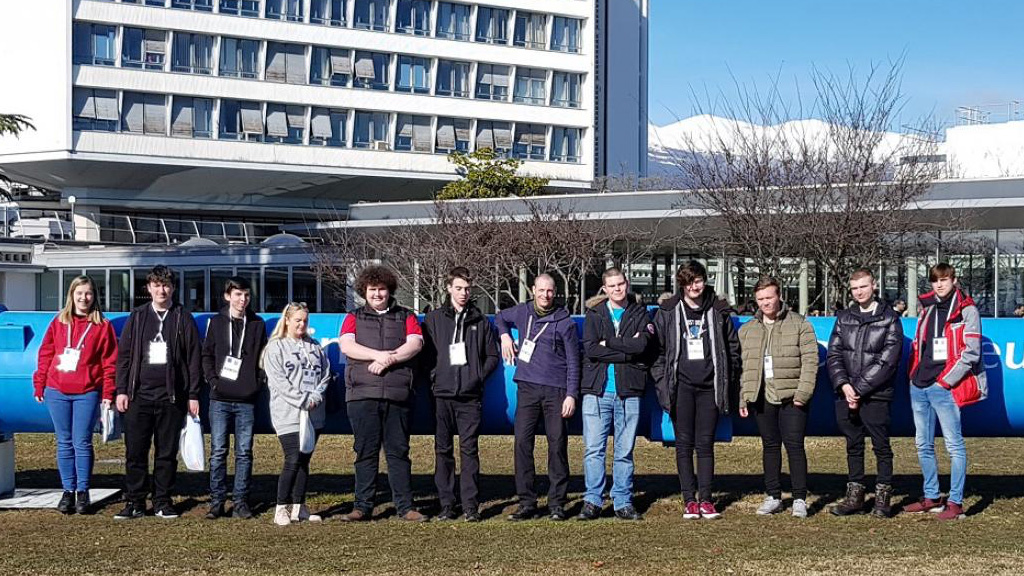Students from Wakefield College have been inspired by a visit to CERN, home of the Large Hadron Collider.
During the visit, the students discovered how CERN is helping to answer some of the most fundamental questions; how did the Universe begin?
What are the basic building blocks of matter? Scientific breakthroughs such as the discovery of the Higgs boson require experimental machines on the large scale, and the students gained an appreciation of the technical and engineering challenges that the multinational experimental collaborations at CERN face.
Duncan Agnew, the Physics lecturer from Wakefield College said, “The students had a fantastic, yet humbling experience; getting a feel for the scale, scope and possibilities that CERN offers, from potential careers to scientific discoveries and applications. They have left with a greater understanding of multidisciplinary collaborations, global scientific endeavours and experimental outcomes.
The UK has been a member of CERN since the organisation was founded in 1954. Membership allows British researchers to take a wide variety of roles that contribute to CERN’s on-going success; from recently qualified technicians and university undergraduates gaining their first taste of working in an international environment to PhD students analysing experimental data and experienced engineers and physicists leading projects or representing their experimental collaborations. The Wakefield College students’ visit was led by a member of the CERN community who talked from personal experience about their contribution to CERN’s research programme.
STFC’s Executive Chair, Professor Mark Thomson, said “The scale of the science and technology at CERN is awe-inspiring. There is no doubt that seeing it at first hand, and meeting the people who work on the experiments, can influence young people’s future education and career choices.”
